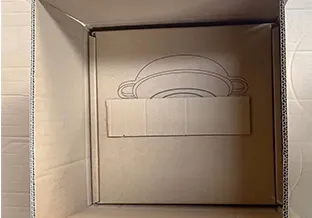
How to Prevent Stickiness in Your Cast Iron Pan while Cooking
Understanding Sticky Cast Iron Pans Causes and Solutions
Cast iron pans are beloved for their durability, heat retention, and ability to develop a natural non-stick surface when properly cared for. However, many novice and even experienced cooks encounter the frustrating issue of sticky surfaces when using their cast iron cookware. This article explores the causes of a sticky cast iron pan and offers effective solutions to restore its performance.
The Causes of Stickiness
1. Insufficient Seasoning One of the most common reasons for a sticky surface is inadequate seasoning. Seasoning is the process of applying a layer of oil to the pan and heating it to create a natural non-stick coating. If the seasoning process is rushed or not done thoroughly, the layer may not bond properly, leading to stickiness.
2. Using the Wrong Oil The type of oil used during seasoning can also affect the surface of the pan. Oils with low smoke points, such as olive oil, can leave a sticky residue when heated. On the other hand, oils with higher smoke points, like canola or grapeseed oil, are better choices for seasoning.
3. Overheating the Pan Overheating a cast iron pan can lead to the breakdown of the seasoning and create a sticky surface. When the pan is too hot, the oils can burn and polymerize improperly, resulting in a tacky finish rather than a smooth, hard coating.
4. Failure to Clean Properly After cooking, if a cast iron pan is not cleaned properly, leftover food particles and grease can build up, contributing to a sticky surface. It’s essential to use the right cleaning methods to maintain the pan's seasoning.
Solutions for Sticky Cast Iron Pans
cast iron pan sticky

If you find yourself with a sticky cast iron pan, don’t despair. Here are some effective methods to restore its smooth cooking surface
1. Re-seasoning the Pan The most effective way to fix a sticky pan is to strip it down and re-season it. Start by cleaning the pan to remove any food particles and grease. Use a mixture of coarse salt and a little water to scrub the surface with a non-metal brush or cloth. Rinse and dry the pan thoroughly, then apply a thin layer of a high-smoke-point oil. Place it upside down in a preheated oven (around 450°F or 232°C) for about an hour. This will bond the oil to the iron, creating a new layer of seasoning.
2. Use a Lye Solution For severe stickiness or build-up, some people opt for a lye solution to strip the pan completely. It’s crucial to follow safety precautions, as lye can be caustic. After soaking the pan in the solution, rinse thoroughly, dry, and proceed to re-season.
3. Cooking with Oil If the stickiness persists after re-seasoning, try cooking with a generous amount of oil or fat. This can help rebuild the seasoning layer. Frying bacon, for example, is not only delicious but also creates a great layer of seasoning during the cooking process.
4. Regularly Maintain the Seasoning To prevent stickiness from returning, make it a habit to regularly maintain the pan's seasoning. After each use, clean it with hot water and a brush, avoiding soap unless absolutely necessary. Dry it immediately and apply a light coat of oil before storing it to keep it conditioned.
Conclusion
A sticky cast iron pan can be an annoyance, but it’s not the end of your cooking adventures with this versatile cookware. By understanding the causes of stickiness and implementing the suggested solutions, you can restore your pan's non-stick performance. With proper care and seasoning, your cast iron pan will last for generations, providing countless delicious meals along the way. Happy cooking!
-
Season Cast Iron Perfectly with GPT-4 Turbo TipsNewsAug.01,2025
-
High Quality Cast Iron Cookware - Baixiang County Zhongda MachineryNewsAug.01,2025
-
Premium Cast Iron Pan: Durable & Perfect HeatNewsAug.01,2025
-
High Quality Kitchen Durable Black Round Cast Iron Cookware Pancake Crepe Pan-Baixiang County Zhongda Machinery Manufacturing Co., Ltd.NewsAug.01,2025
-
Cast Iron Cookware - Baixiang County Zhongda Machinery | Nonstick, Heat ResistanceNewsAug.01,2025
-
High Quality Kitchen Durable Black Round Cast Iron Cookware - Baixiang County Zhongda Machinery | Non-Stick, Heat Retention, DurableNewsJul.31,2025


